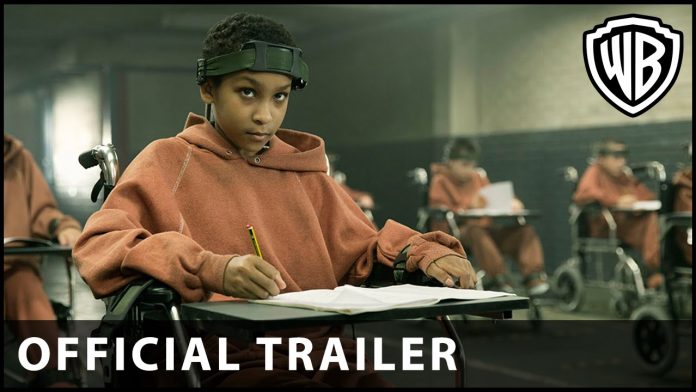GEMMA Arterton, Paddy Considine and Glenn Close take on the undead in the adaptation of the novel The Girl with All the Gifts, an entertaining yet often chilling tale of survival in a post-apocalyptic Britain.
In a base, a bunch of youngsters are subject to close supervision from military, educational and medical personnel, including the overtly polite Melanie (Sennia Nenua). But these are no ordinary youngsters. They are hungries, a term for the undead who have become so thanks to a virus which has affected the country and left them craving for blood from man or creature.
These youngsters have retained the ability to think and speak though, hence why they have been retained in the base where on occasion, some are used for medical experimentation by a scientist Dr Caldwell (Close), desperately seeking a cure. Being different to other sufferers though does not stop them often gnawing ferociously at certain smells or sights, as certain moments detail.
When the undead overrun the military, Melaine, avoiding being experimented on, ends up escaping with sympathetic teacher Miss Justineau (Arterton), a reluctant Sgt Fisher (Considine) and Caldwell. As the unlikely group roam around a dystopian London, they aim to get into contact with a separate unit called Beacon whilst fighting for their survival against the hungries.
Of course when Britain makes an undead-based horror, people could be forgiven for assuming that this is another 28 Days/Weeks Later tale, with that and themes like military personnel, transitional characters, moral obligations, etc. Instead, this is one that stands up on its own two feet, makes it its own film and is a welcome presence for the British horror crowd.
The key scenario to respect about this is its abilities to grip and chill and for the most part, it succeeds with that. Its most successful element comes from the sequence when the base is overrun, done in one tracking shot. To some that might appear as showing off but personally, that is where the film earns its stripes with its depiction of carnage whilst Justineau protects Melanie, resigned to death briefly but both saved thanks to a speeding army truck.
Arterton is splendid to watch as the moral compass of the film, reminding us why we are lucky to have her continuing to make British films. Considine and Close make for good company with the latter not necessarily conforming to a basic one-dimensional mad scientist approach and potentially triggering debate among some viewers whether her motives are justifiable.
Nenua, not even a teenager making this film, succeeds with her performance as the titular character, whose status makes her a threat but potentially a saviour. Early in the film, we see her counting up to 40 several times. What appears reminiscent of the skipping girl from Drowning by Numbers is actually an example of her ability to outsmart the military at times.
One scene does provide a considerable effect given this is a child actor yet still shows an equivalent energy to that of a more experienced actor, even if it strikes fear into certain viewers. The scene involves Melanie, aiming to protect her peers, engaging in a brutal combat with a child hungry with result a gruesome yet powerful scene that may annoy Mail readers but does work in the context of horror.
Like Children of Men, the film’s depiction of dystopian society and the attempt to escape to potential safety is what helps build the intriguing detail.
Despite that, the first half appears much better and the film arguably slows down a touch in its second half which prevents increasing in enjoyment post-first half. Contrasting the action sequences is one to notice because the escape scene is obviously technically superior than a sequence later when the group shoot their way through hungries, never acting dull but too repetitive to hugely admire.
Its structure at times appears in a loose vein of And Then There Were None, something many horrors are guilty of. A supporting soldier enters an abandoned newsagent and proceeds to leave his weaponry and phone outside, just before he is called upon, which tells us what we need to know in a scene which drags a bit too much.
In spite of the slowing down, the curiosity remains and the retaining of its humanist features provide a unique approach rather than being a though-and-through bloodbath. There is unpredictability in the closing stages that makes us genuinely concerned for various characters. This adds a solid use of effect that allows us to play with our hopes and fears, and the ending itself feels justified and bearable. If it has got to the point where by the end there are people we are pretty much begging to see survive, then as a horror, the film has done its job.
It does something different and with a watchable cast that help out when the horror elements are not on screen, The Girl with All the Gifts is as entertaining as it is effective.




























